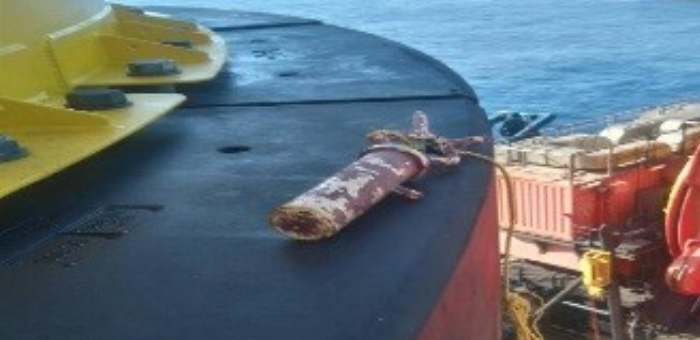IMCA reported two near miss incidents involving potential dropped objects. The objects were left on top of a temporary buoyancy module (TBM) during the installation of a tension leg platform (TLP).
The incidents
In the first incident, two subsea lamps were on top of the TBM after it was retrieved back to deck.
[smlsubform prepend=”GET THE SAFETY4SEA IN YOUR INBOX!” showname=false emailtxt=”” emailholder=”Enter your email address” showsubmit=true submittxt=”Submit” jsthanks=false thankyou=”Thank you for subscribing to our mailing list”]
An investigation discovered that the lamps were temporarily fixed to the TBM by the diving team, and should have been removed after they had finished their task. All other subsea lamps used during the task were removed.
In the second incident, during an inspection of the top of a TBM, after it was retrieved back to deck, a rigging crew reported a wire cable retaining pin lying loose on top of the upper bumper.
Investigation discovered that the object was an ‘ROV friendly’ wire cable-retaining pin. The pin was used to retain a wire in a sheave from which a ball grab was suspended. In order to retrieve the ball grab, an ROV was used to remove the retaining pin. After removal of the pin, the ROV was to let go of the pin, which would then stay suspended under water hanging from a rope. As this pin was not lashed properly, it became loose and landed on top of the upper bumper.
Probable cause
For the first incident, IMCA reported the following:
- Not all subsea lamps were recovered as per post-installation dive tasks;
- The missing subsea lamps were not identified immediately;
- The company was unaware of the missing subsea lamps; there was no notification given by the subcontractor;
- There was no awareness of the possibility of loose equipment being left behind, causing a dropped object threat to the company lifting crew.
For the second incident IMCA reported the following as probable causes:
- Inadequate lashing using inappropriate rope made it possible for the pin to drop;
- The importance of proper lashing was not acknowledged by the divers or the dive supervisor.
Recommendations
As far as the first incident is concerned, IMCA recommended:
- Ensure that subcontractor personnel are properly reminded of the company procedures for subsea material recovery;
- Further emphasize to crew the importance of stop work authority and of speaking up when they see an unsafe condition – which in this case was found to be very effective.
Regarding the second incident, IMCA said that the circumstances under which it took place, must me viewed as lessons learned.






























































